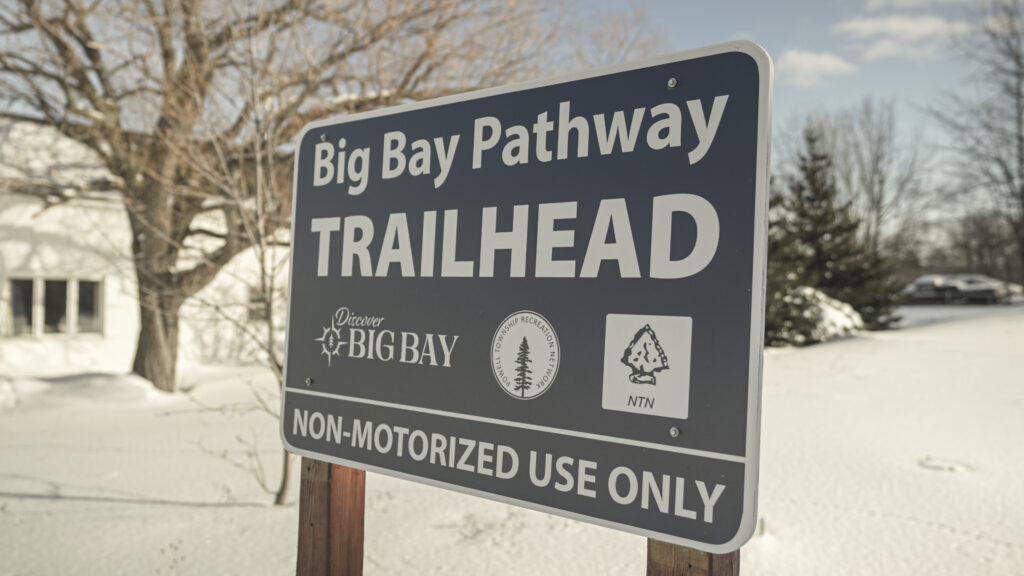Our Unique History
So much of what makes Marquette County unique is its history. Our region’s beginnings are layered with countless acts of discovery and their ensuing industries. Mining, logging & many other trades have taken place here over the years, and even today – companies and businesses continue to thrive wielding many of those early discoveries. Buildings, roads, and entire towns have been erected around our area’s explosive industrial era… and while there are many who know of these histories, there are very few who can claim to truly honor them. Only 30 minutes north of Marquette City, you’ll find Big Bay; a town founded around forestry and trade. Big Bay has been made famous over the years for several reasons, but at the epicenter of that ongoing notoriety, you’ll find Mark & Sue Bevins. New owners of the Thunder Bay Inn, they’re working day & night to ensure that their home’s history is both respected and uplifted.
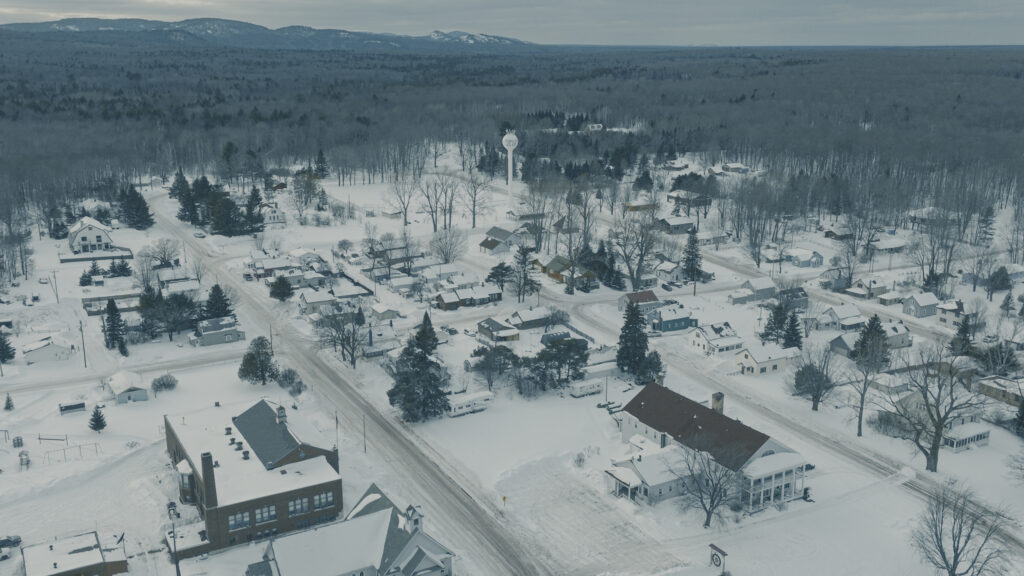
Historic Roots – Where it all Began
“I grew up in Macomb County”, Mark began, noting how “historic” he remembered his hometown being in the early 1960s. “In ‘56 I was born… I graduated high school in ‘74, came up north to NMU to do school for a couple of years”, he went on, before injecting some of his famous humor; “I did a lot of hunting and fishing while I was supposed to be in class”. Eager to catch us up to the work he’s doing in the present day, Mark finished by simply saying “I was hired by General Motors and did about 30 years there, and consulted for 5”. Similarly brisk in her description of her own early life, Sue quickly summarized those initial years by saying “I grew up in Dearborn… spent most of my childhood in the automotive industry. I went to college and started off my career in IT and probably spent 15 years in IT doing project work”.
“My father came here in 1956 and started hunting”, Mark noted about his family’s attachments to the Marquette area, “we’ve been coming here 4 times a year ever since, our home away from home”. At some point, the Bevins family decided to make those quarterly visits a little more permanent, something we discovered when Mark suddenly remarked “my folks are 93 and 89 [years old], they live right down the street, rolling pretty hard still”.
“I was 15 the first time I hitch-hiked [up here]”, Mark laughed, demonstrating just how firm of hold the U.P. had on the entire Bevins bloodline. He went on to describe just how influential the outdoors was within his entire family over the years, saying “we would commute up here and camp in tents. It was the Huron Mountains that pops would come and hunt”. Suddenly recalling one of his earliest memories from those early trips, Mark took a few moments to poke some fun at his younger self, saying “when I was 10 I got a reel and a fishing rod, my pops was kidding” – he revealed to us – “but he said, ‘don’t come back until your bucket is full of trout’… and so I didn’t”.
“My father’s been teaching hunter’s safety since 1956”, Mark further described his family, “[he] wrote the first programs”. Going on to further detail his father’s fascinating work in the early recreational outdoors scene in Michigan, one particularly notable occasion – which, quite frankly, was met with audible surprise by almost everyone in attendance during our chat – was that Mark’s father helped to coin the original phrase, ‘Leave It Better Than You Found It’, a humble nod to the intentional preservation of nature that’s now a household chant heard by outdoorsmen around the world. Having delivered that jaw-dropping bit of information – in true Mark Bevins fashion – he immediately leaped into a new story, leaving us with almost no opportunity to ask for any further details – “Hunting is an excuse to get people out in the woods, it’s therapeutic. When you’re able to embrace solitude – and can be by yourself – you’re happy”. Looking now towards his wife, he let us in on some inside hunting-related humor they share together, “we joke about becoming maple trees; you become still and let the forest walk by you”.
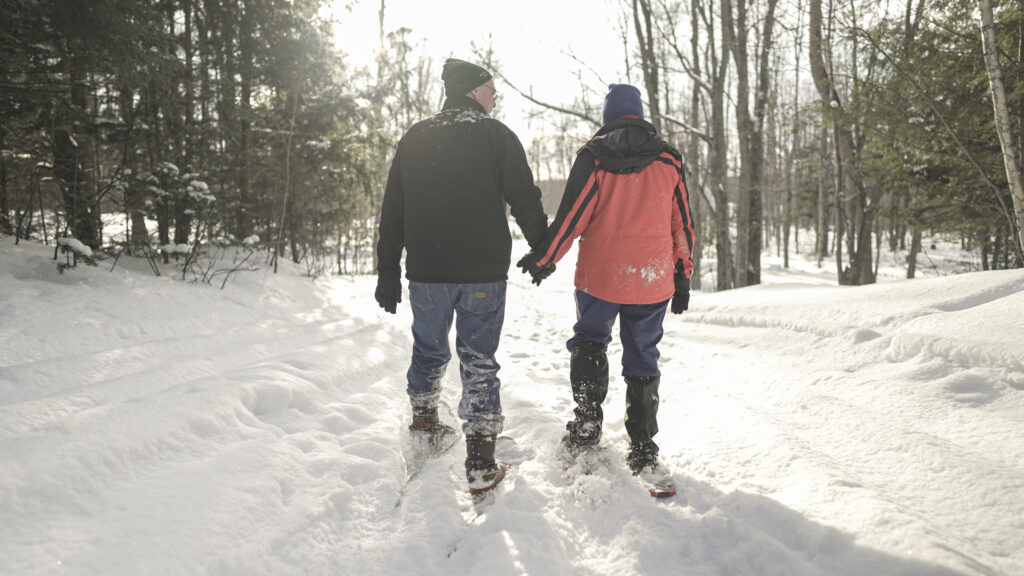
Hollywood in Big Bay – Filming Anatomy of a Murder
“It was called the Big Bay Hotel… it wasn’t called the Thunder Bay Inn until after they shot the movie”, Mark began, detailing some of Inn’s most fascinating history. “In 1952”, he went on, “the Army was in Big Bay and Lieutenant Peterson ended up shooting a retired state policeman. From there [John] Voelker, who was a prosecuting attorney, defended this guy – and ended up writing a book”. The finished book, which Voelker called Anatomy of a Murder, details his now-famous courtroom victory after successfully defending Peterson’s 1st-degree murder charge with a plea for temporary insanity. This local story was eventually brought to the big screen when director Otto Preminger bought the film rights from Voelker. “They called the town [in the film] ‘Thunder Bay’ instead of ‘Big Bay’ to not divulge the facts of the case”, Mark explained, “it was Hollywood’s first time filming on-site and everyone stayed here until they wrapped. A lot of the scenes were shot here so that’s pretty exciting”.
“They had several filming locations in the area”, Sue commented, “They didn’t do any filming at the location where the murder occurred… [filming] was distributed through the area”. Prior to filming on-location at the Inn itself, the Hollywood-based crew had actually built an extension off of the left side of the building to use as one of the sets. Once production finished, however, the building’s owners at the time were given a choice to either have the set destroyed, or left untouched for them to use however they liked. They opted to keep the extension, which now lives on as the physical dining space for the Thunder Bay Inn’s restaurant. Those who patron the restaurant can’t help but envision the likes of James Stewart and Kathryn Grant, among other A-list actors of the era, on set while sipping spirits and dining on local favorites.
Before the Inn was ever famous for its iconic role in film history it lived its original life as a company store for the Brunswick Lumber Company in the early 1900s; a history that Mark & Sue were both happy to recount for us. “In 1909 Brunswick came to Big Bay”, Mark began, “ there had already been a lumber company here that went under. [Brunswick Lumber Company] came here for the sole purpose of harvesting maple for bowling alleys and red oak for frames for billiard tables. It was important for them to come here because Edison – at the turn of the 20th century – got lights indoors. The recreation industry went viral. They were turning out tons and tons of lumber for that… [the Inn] started out as a company store. A ‘mini-mall’, we like to tell customers. Basically, it supplied the loggers”. Sue then went on to explain that, “they bought fabric, milk, sugar, eggs, and flour, it was a coupon system so no cash. They would spend those [coupons] in the store for what they needed to eat and clothe their families”.
Further along in Big Bay’s history, Mark recalled the next big event to happen to the small town; “Henry Ford at 81 [years old] purchased basically the whole town. It was his 5th mill, he acquired 300k-500k acres”. Sue continued, “He bought the town, that’s typically what he did, and had company towns all over the country. He cut timber, harvested it and processed it here in town, and shipped it to Munising to be fabricated… we hear stories from people remembering him driving into town, handing out nickels to the kids. He was remembered for the exposure he brought to the area”. For the company store, Ford saw a slightly different direction he could take the building in, repurposing it into a space to host Ford Motor Company’s executives. “How much [Ford] lumbered, we don’t know, but he provided electricity for Big Bay”, Mark continued, “he acquired a great affinity for this area…this was a place, I think, in his last years he really valued”.
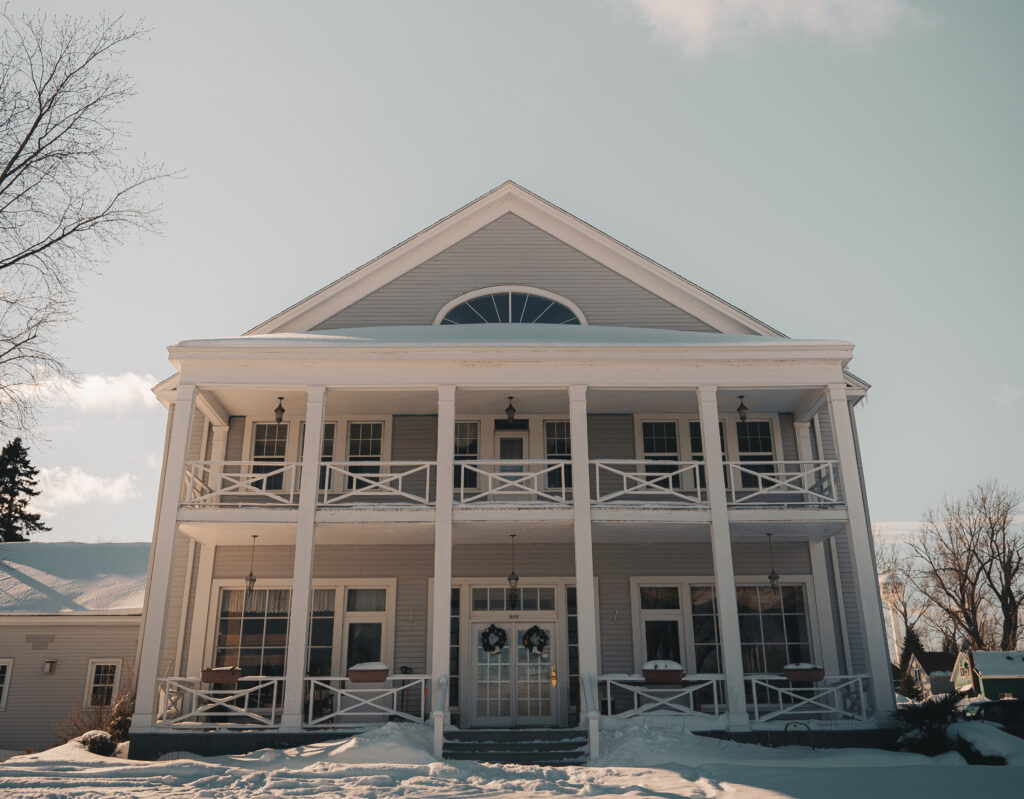
Life at the Inn – Servants of History
“We’re renovating the third floor right now to be our home. We’re currently putting in a kitchen, bathroom, living room, dining room, and a room for our grandson. We’re making that our home and planning on staying there for as long as this is our business” Sue remarked about their decision to live on-site after they purchased the building. “Often, guests will comment about how we live on-site and how we’re so hands-on”, she went on, joking that “if they had another place [to live] we would just sleep there”.
“Twenty years ago I inspected this place and wrote a 30-page report to the bank”, Mark revealed about his first attempt at purchasing the property, “it was the reason Big Bay existed. We consider [the Inn] the cultural epicenter here. It means so much to Big Bay and the surrounding area”. To Mark’s surprise, he lost that initial bid on the property (and the next one a while later). Years and years would go by before the Bevins’ were able to finally claim ownership of the Inn, but remarkably, none of those early passions have faded.
Prior to our sit-down with Mark & Sue, they were kind enough to grant us an incredibly thorough tour of the Inn, bringing us down through the original basement and all the way up through their modern kitchens. All the while, they intimately described to us their plans for the ongoing restorations & renovations happening throughout the building. Sworn to secrecy on a great many things that we saw, as well as most of those plans & ambitions, all we can say is how ridiculously excited we are for not only the Thunder Bay Inn, but for the greater Marquette area as well. If we could put a single word to Mark & Sue’s plans, it would simply be; historic. “We’re servants of this place more than we’re owners”, Mark made sure to say, perfectly summarizing their intended roles for the Inn in Big Bay. “We really want to bring the goodwill to the community. It’s a good 4th quarter project”.

“[The Inn] is 18,500 sq feet, 14 rooms on the 2nd floor converted by Henry Ford. There’s a restaurant, a bar, an original kitchen that we’re restoring for use… our biggest goal here is to open this place up for community use”, Mark summarized, “we purchased [the Inn] because of the enormous history”. “We serve lunch and dinner 5 days a week”, Sue made sure to say about the restaurant, “and do pizzas after 9 after the kitchen closes”. Taking a moment to describe her experience in the food service industry, Sue went on to say; “I was in food service, so I did a lot of catering. I have that food service background, but not in a restaurant setting. It’s a bit of a learning curve, but in my wheelhouse”. Regarding their overnight guests, however, Sue happily admits that it’s a new experience for the pair; “I think we’re learning as we go. Even though it was difficult to purchase a business during COVID-19, it provided an opportunity to start out slowly. It gave us time to learn while business was a little bit slower”.
Preserving and Celebrating Heritage
“The vision here at Thunder Bay Inn is to open this place up for local folks to utilize and celebrate their heritage”, Mark firmly stated. Taking a few moments to guess why Big Bay hadn’t yet founded a local festival to celebrate its lumber-based origins, he went on to say “we’d like to host the first lumberjack logging festival and make that an annual thing for the sole purpose of the local folks celebrating their heritage. If Brunswick wasn’t here, none of this would be here. [We want] to teach everybody heritage, provide big events, conferences… make this a culture epicenter, as it should be”.
“When he says open it up”, Sue added, remembering a time when guests of the restaurant weren’t even allowed in the main lobby, “we want to be giving tours and not having places be off limits any longer. We do take guided tours of the building and talk about the history… but a lot of people don’t even realize how old the building is when they come”.
“I always wanted this building”, Mark recalled when we asked if he could describe where his inspiration for the project comes from, “… what I like to tell people is that I’m 65 but going on 8th grade. I’m really inspired… I’ve always had a creative side that I didn’t get to use all the time with General Motors. [The Inn] has allowed us to get creative but only creative in bringing history back”. “Mark’s very much a visionary”, Sue said about her husband, “he’s always looking toward the future… he’s always looking at what needs to be done… I’ve known Mark for 30 years, he’s a dreamer. [He’s] always looking toward the future”.
“Being heavily involved in the business is not the norm for a hotel”, Sue went on while describing their unique approach to managing the Inn, “when you go to a hotel you don’t see the owner – when you come here, you come to visit family. It’s like you came to grandma’s house. You’re going to get a personal touch. If your snowmobile or vehicle breaks down in front of the building, we’ll be out there helping you get it started”. Taking the opportunity to remark on some of the changes she’s been seeing around town over recent years, Sue made sure to say that “I’ve really noticed we’re really getting more families and kids… As people start to see we’re not so far off the beaten path – only 25 miles from Marquette, not that far – I think that it becomes more doable for families, and seeing the value in raising your kids in a small town… there’s a lot of retired people in the area, and they really need the young families to come in. It’s good that we’re seeing that”.
“I’m vice-chair on Big Bay Stewardship Council”, Mark mentioned as well, “[it’s] a group to help responsibly develop recreation. There’s a lot going on here. We want to put quality over quantity. There’s a good mixture of folks that value that and that’s the kind of growth we’re after… [Big Bay] is the best-kept secret; there is the most amazing kayaking on the planet here nearby, the Huron Mountains provide beautiful camping year-round, the pathways are such a resource – and they’re a block away, put your cross country skis on and hit the trail. I call Big Bay a micro town, the access to the wilderness – the streams, waterfalls, brook trout, fishing in the lake – it’s all in your backyard”. Sue added, “There’s a lot to do here if you really enjoy nature, you can’t beat Big Bay. There’s so much diversity, there’s something for everyone”.
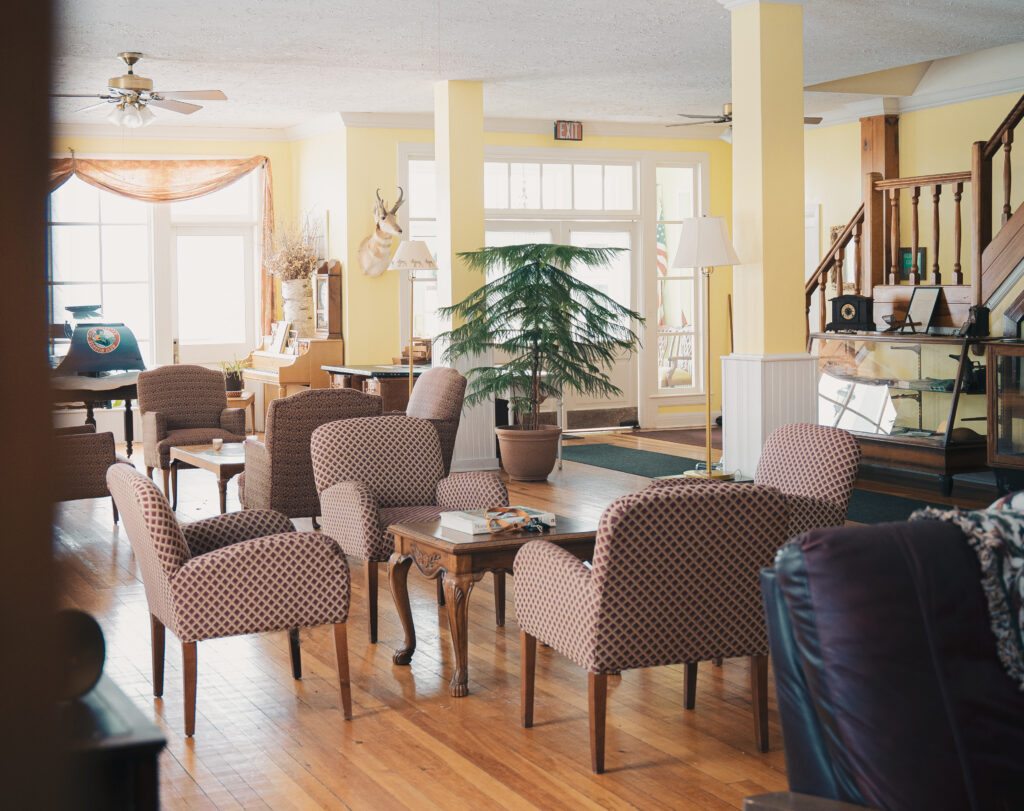
In Conclusion
Having reached the end of our newest People of Marquette article, we’re hoping you’ll be in agreement with our earlier statement that Mark & Sue Bevins are truly honoring this region’s history with what they’re up to in the Thunder Bay Inn. As prideful as they are humble, the pair has set themselves on an intriguing path forward that we can almost guarantee will be an epic new chapter for the Big Bay area. If you’d like to sample some of the area’s rich culture and history for yourself, look no further than by contacting the Bevins of the glorious Thunder Bay Inn. Book yourself a short stay, or take the quick drive north of Marquette for some of those incredible pizzas Sue mentioned (we may or may not have sampled a few during our time at the Inn, they may or may not be fantastic). Regardless of which option you choose, Mark & Sue will be there – night and day – to ensure you’re getting the most out of the time you share with its history.
Mark & Sue are Making it Marquette – in Big Bay. Where will you?
